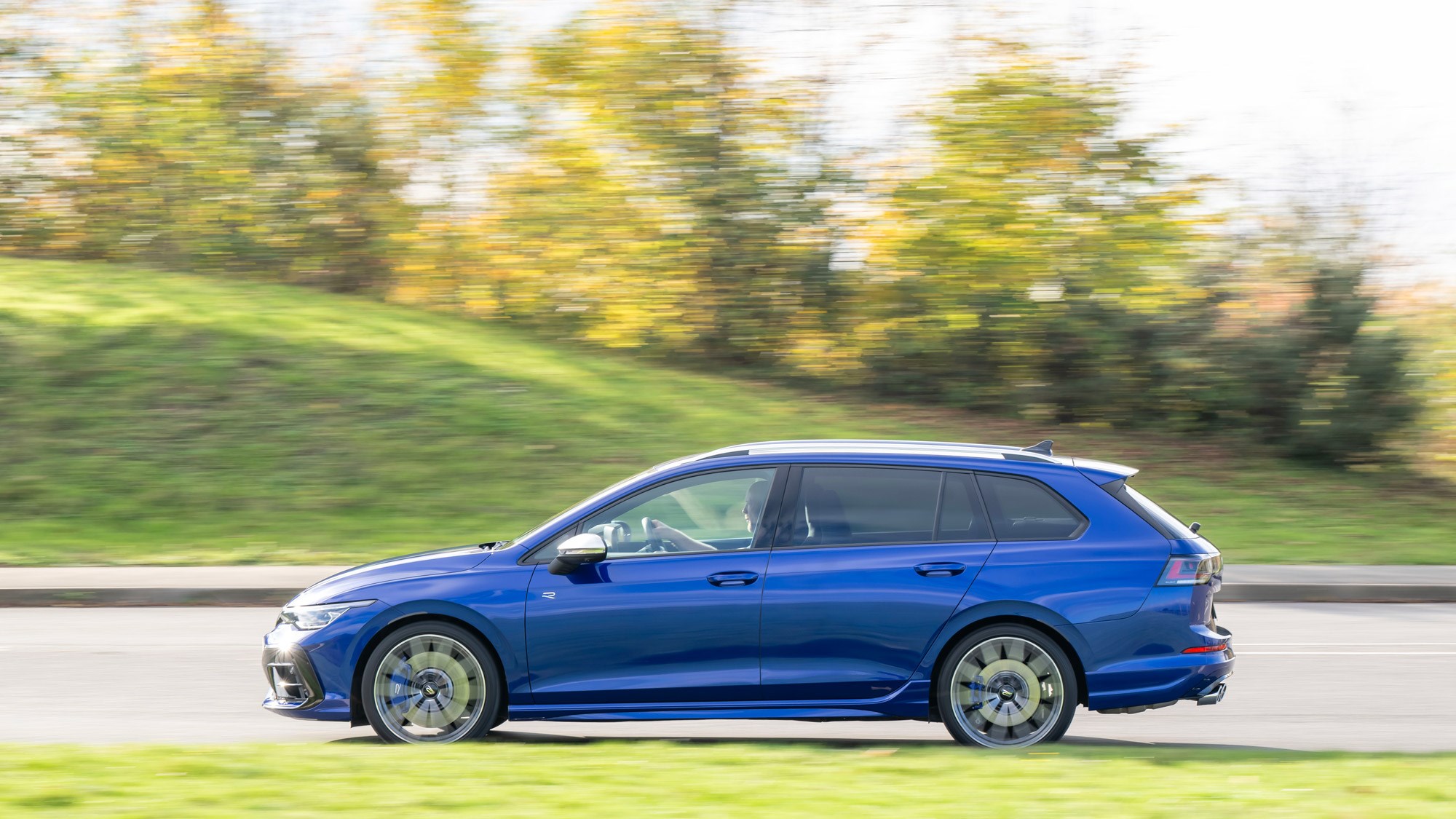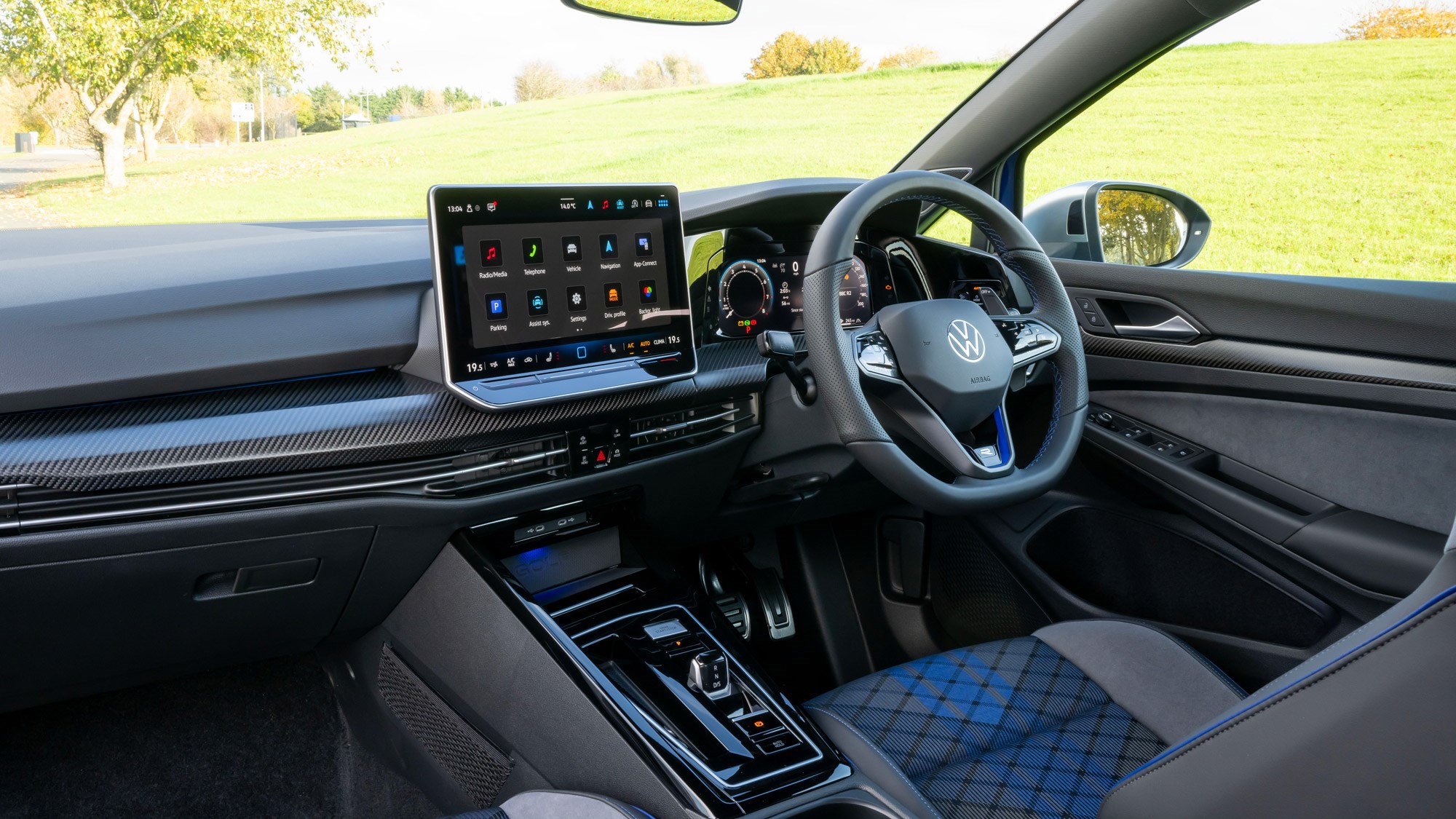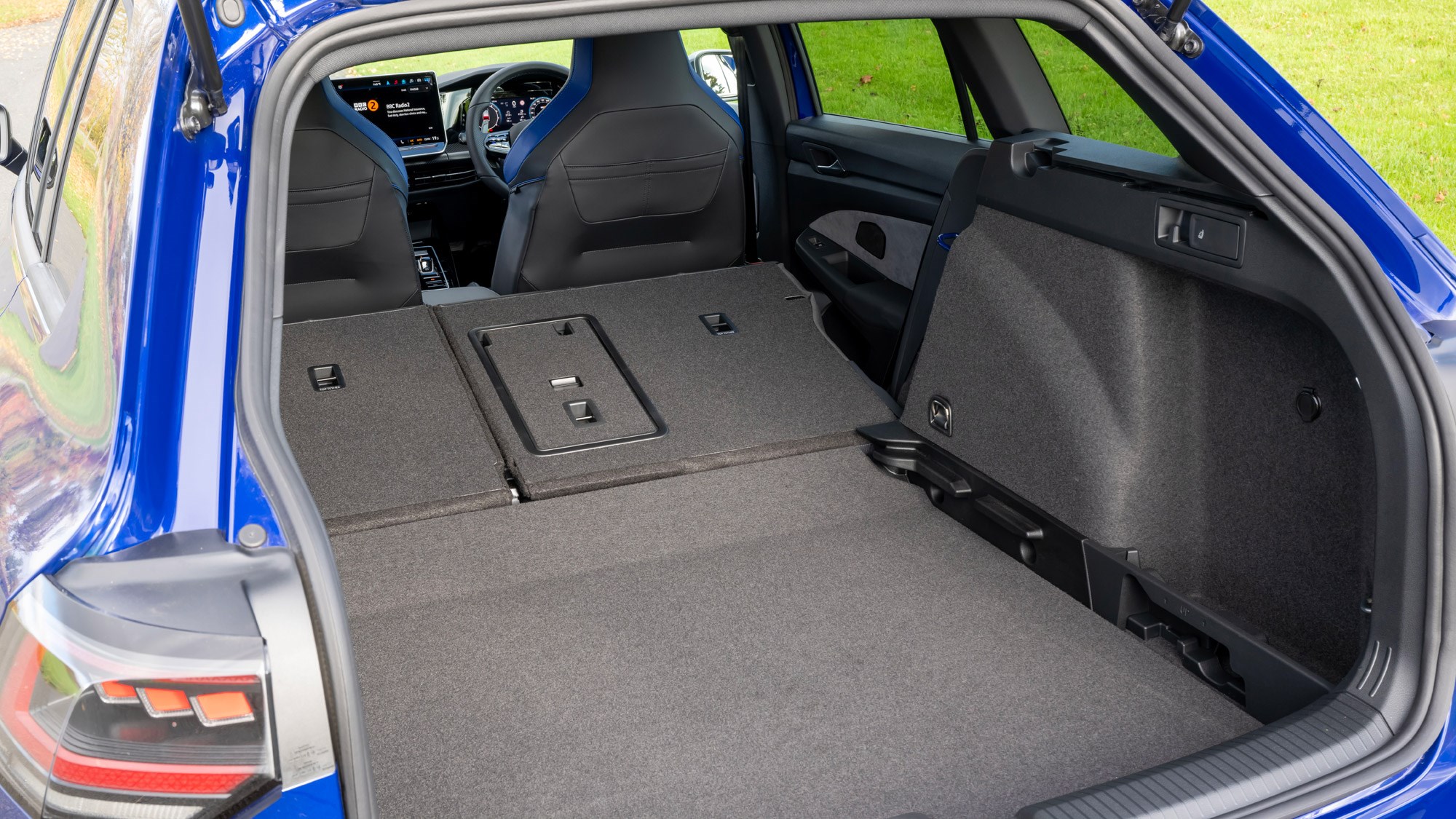► Facelifted Golf R tested in estate form
► Same performance as the hatch but so much more practicality
► So why does almost nobody buy one?
When did you last see a Volkswagen Golf R Estate on the road? I’m not talking about the Mk7 (which sold well because of ridiculously cheap lease deals), but the Mk8 wagon. You just never see them.
Little wonder. Though the Golf is still among the UK’s most popular cars, only five per cent of them sold are estates, and of those, only five per cent of Golf Estates sold are the R. So next to nobody appears to have bought one, and a quick browse of the classifieds reaffirms that.
But why? Many love the Golf R hatch, so why wouldn’t you want a far more practical version for hardly any more money? Time to investigate.
At a glance
Pros: Supremely quick, big boot, now has working infotainment
Cons: Gets expensive with options, the R still has the annoying steering wheel buttons
What’s new?
More power is the headline of this updated Golf R, which now gets the same 328bhp as the R 20 Years special edition, up by 13bhp. But in reality, the biggest change you’ll notice is the R’s new 12.9-inch touchscreen, rolled out across the entire Golf line-up because the pre-facelift car’s screen was, well, terrible.

The front end has also had a redesign, which is slightly more significant than that of the standard Golf, with a new bumper and Matrix LED headlights as standard. To get nerdy, there’s a new set of 19-inch ‘Warmenau’ alloys, which weighing just 8kg a corner, help to bring the weight down slightly.
What are the specs?
Volkswagen’s long-running EA888 is once again present in the Golf R, and is now putting out 328bhp, with torque remaining the same at 310lb ft. As before, it’s a seven-speed DSG getting that power down and to all four wheels. Traction is certainly one thing this Golf is not lacking.
The small increase in power and revisions to the gearbox shave a tenth of a second off its 0-62mph time, now taking 4.8 seconds, with the top speed limited to 155mph. It can be raised to 168mph as part of the optional R Performance Pack, which also adds a ‘Drift’ and ‘Special’ driving modes designed for track use.

The Golf R’s running costs will massively vary depending on how you drive it. If you behave like a typical Golf R yob, you’ll get fuel economy in the low 20s, but on a steady motorway run it’s possible to get into the high 30s and beyond.
How does it drive?
Few performance cars have as easily accessible performance as a Golf R. That extra pace wasn’t exactly needed but is welcome, with this fast wagon still having remarkable point-to-point pace, even in wet conditions. An Audi RS6 Avant might have almost double the power, but I’m pretty sure it couldn’t get away from an R on a tight back road. That’s the other thing, the Golf is such an excellent size for British roads, meaning you can push it on without worrying too much about its width.
It also sounds better than I remember a pre-facelift Golf R, too, and even though you’re well aware much of it is being piped in through the speakers, it’s still quite effective without being too try-hard. You can’t have the Akrapovic exhaust on the Estate like you can on the hatchback, either. But the gearbox is good, quick to shift and made better when you take control with the paddles, which are larger and have more substance to them than other DSGs.

Volkswagen also has the audacity to charge £735 for its DCC adaptive dampers, a feature that really should be standard by now, but nevertheless it’s worth the extra expense for its ability to soften the R’s ride from overly firm to compliant and liveable. The ‘Race’ mode is just too extreme for road use too; the ride becomes brittle and the steering also has too much weight to it. No, the Golf R is a car best in ‘Sport’ for everything other than the suspension.
What’s it like inside?
A range of small tweaks goes a long way to improving the R’s interior, with the new touchscreen being a significant improvement over the first Mk8 Golf’s irritating screen. It’s quicker with easier shortcuts to turn off the safety aids and ESC and to get to the information you want. Yes, it’s annoying there aren’t any proper buttons for the climate, but that’s part and parcel of most modern VWs, and is something you do acclimatise to quite quickly.
But while Volkswagen has taken out the annoying touch-sensitive pads on the steering wheel of every other version of Golf, they remain on the R. Apparently it was too much work for VW to re-engineer the steering wheel for the dedicated ‘R’ mode. Shame.

The sports seats are fantastic with plenty of support to keep you hemmed in during harder cornering, and the blue detailing and microsuede upholstery is a real highlight. Blue also appears on the steering wheel and ambient lighting – reminding you it’s an ‘R’ without being overkill. Less of a highlight is the cheap-feeling carbon detailing on the dashboard and door cards, which – much to my shock – are a £810 option. Keep the money in your pocket, they’re not worth it.
But perhaps most important is the subject of space. The Golf Estate doesn’t disappoint, either, with its 611-litre boot a terrific size by compact(ish) estate rivals, and is no smaller than that of a regular Golf Estate, either. While rear space can be a bit tight for taller adults, the Golf R will still work well as a practical family car. It’s worth remembering it’s the only sporty Volkswagen estate you can get now, too, with the Arteon Shooting Brake now discontinued in the UK, and a sporty Passat highly unlikely.
Before you buy (trims and rivals)
The Golf R Estate starts from £45,970, working out as £1,435 more than the hatch. Considering how much more car you get for the money, it’s not bad, if a lot of money for a Golf.
Standard equipment is fairly generous, too, including heated sports seats, 18-inch alloy wheels, matrix LED headlights and a reversing camera. That said, you’ll probably want to add a few extras on top of it – DCC is a must at £735 and a £175 reversible luggage mat will be useful if you have pets.

A nifty trick is also to choose the 19-inch Warmenau alloy wheels as by default you get a saving on the R Performance Pack when buying in conjunction – combined the two options cost around £1,500, whereas if you bought the pack alone it sets you back £2,000.
The only real rival to the Golf R Estate is the Cupra Leon Estate, which with the exact same engine costs exactly the same as the VW – starting from £45,905 – though does get two extra years of warranty, lasting five years or 90,000 miles in total.
Verdict
Fast estate cars, especially at the more attainable end of the spectrum, are more niche than ever, and I must admit it remains a bit of a mystery why so few people buy the Volkswagen Golf R Estate.
It’s a fiercely quick yet highly usable estate car that, while no means a bargain, is half the price of something like a BMW M3 Touring, yet more than likely just as quick in most everyday scenarios. Changes made to this latest Golf R’s interior, engine and gearbox improve it further, and when you consider the identical Cupra will cost the same to buy and lease, it becomes an even more attractive package.
As Volkswagen increasingly looks to scale back on its slower-selling cars, buy a Golf R Estate while you can.